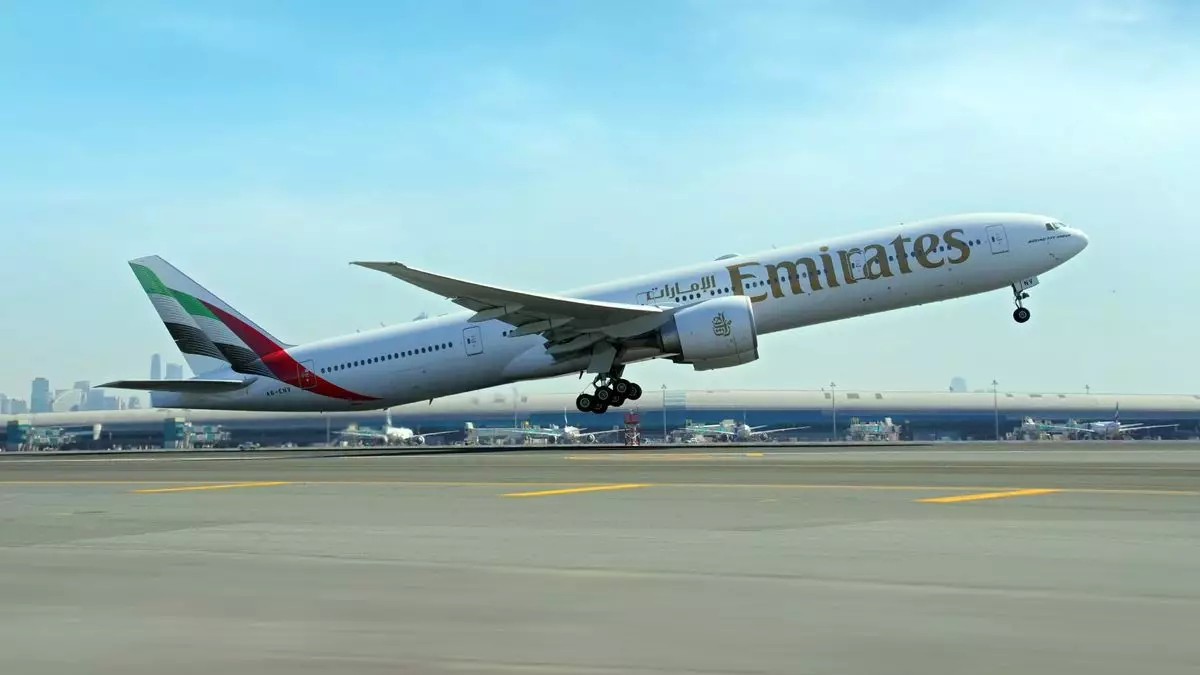The intricate web of international air travel is profoundly affected by geopolitical tensions, and the ongoing conflict involving Iran and Israel is no exception. Despite recent reports hinting at a ceasefire, airlines are still opting to circumnavigate Iranian airspace, leading to extended travel durations for those journeying to the Gulf states and beyond. While airspace was indeed opened across the region, airlines such as Emirates and Qatar Airways continue to exercise caution as they re-route flights, prioritizing passenger safety over convenience. The implications of such defensive strategies resonate deeply within the industry, prompting an examination of both immediate and future travel dynamics.
Rerouting: A Necessity or an Inconvenience?
The hesitance surrounding the use of Iranian airspace has resulted in a significant increase in flight durations—averaging an additional 45 to 90 minutes for trips rerouted over Egypt and Saudi Arabia. For the airlines involved, including the Indian carrier Air India and the prominent Gulf operators, these changes reflect a critical balancing act. They must satisfy the demand for safety while also recognizing the frustrations of travelers faced with protracted journeys. John Grant, a senior analyst at OAG, notes that while airlines are managing to adhere to their schedules, the congestion along these alternative routes raises questions about the sustainability of such operational shifts in the long term.
The Financial Implications: A Growing Concern
The financial ramifications of re-routing flights are considerable. The operational costs associated with longer journeys, alongside the need for more fuel, ripple through airline economics, potentially affecting ticket prices. The air travel sector is notoriously sensitive to both economic shifts and consumer sentiment. In light of these challenges, executives need to carefully gauge traveler behavior and adapt accordingly. As Jens Flottau remarked in a recent podcast, a short-term dip in demand is likely as travelers reevaluate their options amid ongoing uncertainty. While the future remains ambiguous, airlines must remain vigilant to not only maintain profitability but also ensure customer satisfaction.
Airspace Management: A Testament to Resilience
Amid these challenges, the performance of air traffic control bodies in managing increased congestion warrants recognition. Interestingly, the regional entities involved have shown commendable adaptability at a time when efficiency is paramount. The ability to handle the recalibrated air traffic without major disruptions speaks volumes to their expertise and preparedness in crisis management scenarios. This adaptability is crucial for the Gulf air carriers navigating volatile airspace, providing them a sense of stability in a climate that feels anything but predictable.
Traveler Sentiment: A Balancing Act
The overall sentiment among travelers during these tumultuous times remains tepid. While some may be hesitant or reluctant to book flights over the Middle East super hubs, others may find that the convenience of these routes still outweighs the risks associated with geopolitical instability. Despite U.S. airlines halting operations to certain destinations in this vital region, it is evident that the demand for travel will eventually rise again, contingent upon an environment conducive to safe travel. As the steep price of air travel and shifting circumstances collide, the industry’s adaptability to traveler sentiment will be key in regaining lost ground.
Future Outlook: Navigating Uncertainty
Looking ahead, the aviation industry’s ability to navigate through uncertainty hinges upon its capacity to adapt to ever-changing geopolitical landscapes. This resilience will be essential not only in managing current challenges but also in preparing for potential escalations in conflict or the sudden reopening of airspace. The swift response depicted by Emirates in activating contingency plans points toward a trend vital for all airlines set to weather stormy skies. With stakeholders from various realms rallying to instill confidence in air travel, there remains hope that a return to a more stable and predictable scheduling landscape is on the horizon. However, the question lingers: Will passengers trust the skies again, or will historical scars leave an indelible mark on future travel decisions?


Leave a Reply